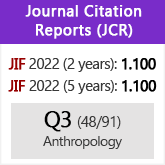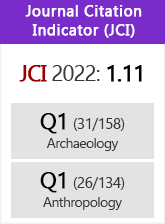Archaeological research in the Eurasian steppes
DOI:
https://doi.org/10.3989/tp.1998.v55.i1.322Keywords:
Eurasian, Black Sea, Caucasus, Central Asia, Siberia, Steppes, Bronze Age, Greek Colonization, Animal Style, Metallurgy, Kurgan, Scythians, Huns, SassaniansAbstract
This paper presents the activities of the 'Eurasien-Abteilung' of the German Archaeological Institute in different countries of former USSR. Many of these projects have just begun; consequently the paper does not discuss the results of these investigations, but details their scientific purposes. The investigations cover an area which extends from the Black Sea to northeastern China. The principal objects of these investigations include: the transition from the Late Bronze to the Early Iron Age in the Pontic area north of the Black Sea and the Greek colonization of that area; the activities of the Scythians and the Sassanians in Transcaucasia, urbanism and metallurgy in the Bronze Age of Central Asia; and, finally, cultural developments from the Early Bronze Age to the periods of the Scythians and the Huns period in southern Siberia.
Downloads
Download data is not yet available.
Downloads
Published
1998-06-30
How to Cite
Parzinger, H. (1998). Archaeological research in the Eurasian steppes. Trabajos De Prehistoria, 55(1), 147–154. https://doi.org/10.3989/tp.1998.v55.i1.322
Issue
Section
Reports
License
Copyright (c) 1998 Consejo Superior de Investigaciones Científicas (CSIC)

This work is licensed under a Creative Commons Attribution 4.0 International License.
© CSIC. Manuscripts published in both the printed and online versions of this Journal are the property of Consejo Superior de Investigaciones Científicas, and quoting this source is a requirement for any partial or full reproduction.All contents of this electronic edition, except where otherwise noted, are distributed under a “Creative Commons Attribution 4.0 International” (CC BY 4.0) License. You may read here the basic information and the legal text of the license. The indication of the CC BY 4.0 License must be expressly stated in this way when necessary.
Self-archiving in repositories, personal webpages or similar, of any version other than the published by the Editor, is not allowed.
















